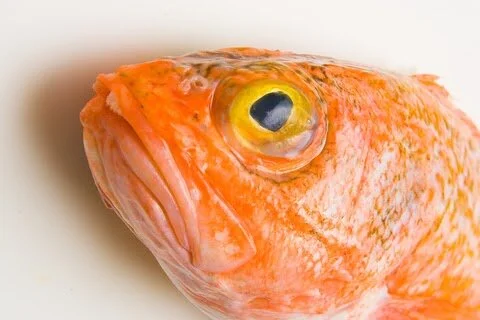The Story of the Orange Roughy: A cautionary tale for deep sea resource extraction
Megan Hayes
The deep sea could just be the gold rush of the 21st century. Underwater rare-earth mineral stores there could help propel the green economy forward by making it more feasible and affordable to construct renewable, battery powered energy alternatives. The crust of the underwater mountain, Tropic Seamount, alone could hold enough cobalt to power 277 million electric cars and enough tellurium to build solar panels generating more than half of the United Kingdom’s electricity. But before we rush to strip mine the deep, we might want to consider the cautionary tale of the Orange Roughy.
In the mid-1970s Orange Roughy became one of New Zealand’s most profitable fisheries after large aggregations of the fish were discovered off its coast. Exports to the U.S. were booming, profits were soaring, and the total catch was significant. In 1989 alone, according to the Marine Stewardship Council, New Zealand’s Orange Roughy catch was a staggering 54,000 tonnes.
Diagram of an Orange Roughy. Photo: Robbie Cada.
However, little was known about the Orange Roughy’s life cycle, leading to its collapse. Orange Roughy live at depths between 500 and 1000m under extreme pressure in frigid temperatures with little to no light. This reality makes the Orange Roughy more complicated to study today and even more so when the technology scientists had available was less developed. Scientists, however, did the best they could with the information they had. They assumed Orange Roughy had a similar life cycle to the shallower water fish they were more familiar with like cod and tilapia. These fish typically don’t live more than a few decades, mature early, and reproduce frequently, meaning they can support a high fishing intensity up to a point. With these assumptions in mind, it was thought the Orange Roughy could also handle a high catch rate.
A decade after the Orange Roughy fishing frenzy began, scientists discovered that its life cycle was not what they had thought. Orange Roughy turned out to live to over 200 years old, mature slowly and reproduce infrequently. Combined with the fact that they aggregate in huge numbers during spawning events (sometimes over 50m in height), they were extremely susceptible to overfishing. Many were simply caught before they had a chance to reproduce. This misunderstanding of their biology led to unintentionally fishing them at an unsustainable rate.
Orange Roughy. Photo: Dreamstime.
Environmental impacts
The environment where the Orange Roughy live has also been impacted. They commonly live on underwater mountains covered in cold water corals that support a thriving ecosystem. When the large weighted nets used to catch Orange Roughy drag along the ocean geography, they take with them everything in their path, including the delicate corals. The damage incurred to this particular environment can take decades to recover, reducing the ecosystem it supports to a shadow of its former self.
Is it too late for the Orange Roughy?
Today, with more accurate stock assessment techniques, regular monitoring, and rigorous management, in some areas the Orange Roughy fishery looks hopeful and on a path to recovery. In fact, three areas in New Zealand where the Orange Roughy is fished have received the Marine Stewardship Council certification of sustainability. However, the fish stocks are still significantly below what they once were. It’s estimated that today they are 10-30% or less of their original size and will take decades to fully recover. Many conservation organizations, like the Monterey Bay Aquarium's Seafood Watch, still advise against consuming the Orange Roughy for sustainability reasons, concerns about the fishing method’s damage to the environment, and high levels of mercury found in the fish.
The Orange Roughy is the story of the rise, fall and path to recovery of one fishery - but the lessons learned can be applied to deep sea exploration and resource extraction as a whole. The deep sea offers many potential riches, but when extracting them we must proceed with caution. As the tale of the Orange Roughy illustrates, our actions have unknowable impacts, some which can be consequential and tragic. As the world looks to mine the deep we must acknowledge this truth and make the decision as a global community whether the riches are worth the risk of unknown consequences.
If you want to find out more about this unique conservation case, here are some interesting resources
Americans Commonly Eat Orange Roughy, a Fish Scientists Say Can Live to 250 Years Old - By Kate Evans
Orange Roughy: The Extraordinary Turnaround - Marine Stewardship Council
Orange Roughy, Hoplostethus atlanticus Collett, 1889 - By Mark McGrouther
The Red List: Orange Roughy - By Sarah Bedolfe
History’s Largest Mining Operation Is About to Begin - By Wil S. Hylton
Check out Seafood Watch to learn what seafood is sustainable and safe to consume
Seas The Day investigates current and future conservation efforts being used to combat the issues facing our oceans
IF YOU’VE ENJOYED READING THIS ARTICLE, LOOK OUT FOR MORE SEAS THE DAY blogs and follow Megan here.
Want to write for us? Check out our ‘Get Involved’ section.


